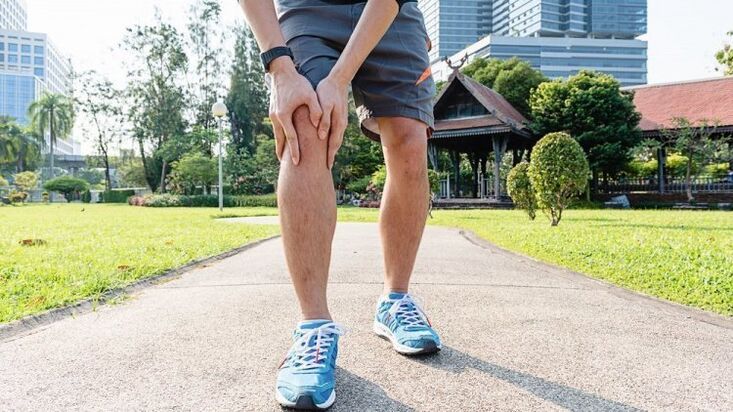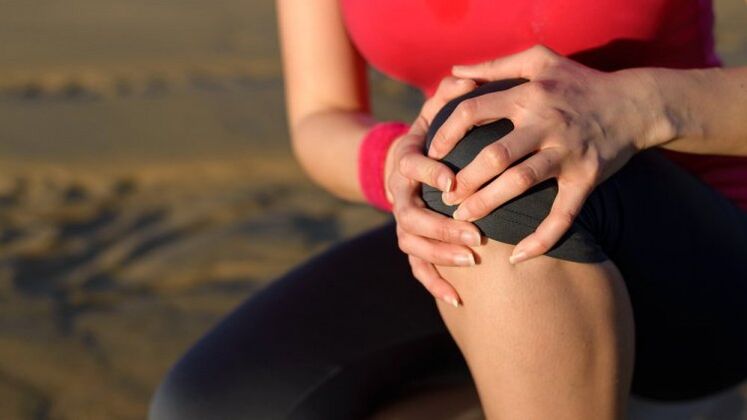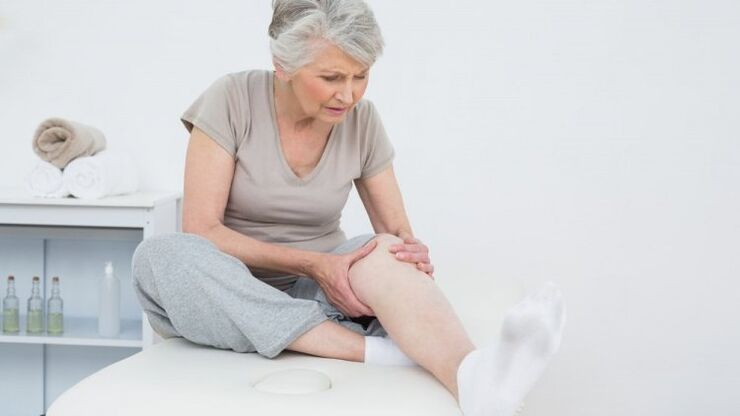Our joints are very healthy. The ends of the bones fit snugly and are covered with cartilage from above for better glide. The joint itself is protected by the joint capsule and the ligaments and muscles strengthen it front, back and sides. Inside the joint capsule, there is a special fluid that provides smooth movement without jerking, popping and crushing. That's how healthy joints work. And what about them with osteoarthritis?
How and why arthrosis occurs: obesity, trauma, arthritis
For starters, how does osteoarthritis differ from arthritis? Arthritis is inflammation of the joints and can be treated and treated until complete recovery. With arthrosis, the cartilage on the articular surfaces of the bones becomes deformed, thinner, loses elasticity, becomes covered with cracks and becomes layered, the amount of synovial fluid decreases. And these changes are, unfortunately, irreversible. Therefore, this disease is called degenerative, that is, destructive. Joint destruction is affected by age - over time, cartilage wears away, but at the center of it all is our upright posture, due to which a great deal of load is placed on the knee joints.
A gonarthrosis is arthrosis of the knee joint. This type of arthrosis is more common in women and is aggravated by obesity and venous disease. Many elderly people suffer from osteoarthritis, which is explained by age-related joint changes. At a young age, osteoarthritis can occur with damage to the joints during sports or with great physical effort. In addition, the development of osteoarthritis is influenced by weakness of ligaments and muscles in the knee area, a sedentary lifestyle, arthritis, stress and metabolic disorders and in everyday life - high heels and carrying weights (eg shopping bags ). Joint defeat is bilateral, but it can also occur in one leg.
Arthrosis manifestations: pain, crushing, stiffness

Knee pain, crushing, stiffness during flexion and extension of the joint, in particular when a person stands up and sits down - all these are signs of arthrosis of the knee joint. However, pain does not come suddenly. At the beginning of the disease, there is a lot of discomfort in the knee, which turns into pain with great exertion, running and exercise. If the pain is acute, it may be associated with dislocation, sprains, damage to the menisci (elastic cartilage pads in the joint).
With 2nd degree arthrosis, knee pain becomes a frequent companion, it is especially noticeable after long walks, lifting weights. If you give the joint rest, the pain disappears, but it comes back again when loading is resumed. An additional symptom of osteoarthritis is swelling of the knee joint. In addition, there is an excessive accumulation of fluid in the joints (synovitis), a characteristic snapping during movement, in which pain occurs, and then limited mobility in the knee. The patient cannot easily bend and unfold the leg. Trying to straighten it completely causes severe pain.
When the arthrosis reaches the third degree, the knee joint sometimes completely loses its mobility. People walk with their legs slightly bent at the knees, suffer from severe pains that often occur when the weather changes, and can be tormenting at rest, even at night. Patients need to resort to painkillers. At this stage, it is also possible to change the shape of the legs - they bend outwards (legs with wheels) or inwards. It's not uncommon for people to rub their painful knees, intuitively trying to improve the blood flow in them.
Arthrosis treatment: weight loss, movement is life

The diagnosis of arthrosis is made by X-ray examination. Typical alterations are the narrowing of the joint space, the appearance of osteophytes (salt deposits), the destruction of bones. Many patients come to the doctor at the stage when it becomes problematic to fall asleep at night without anesthesia. Although joint changes are irreversible, there are some things you can do to improve the patient's life. Treatment of osteoarthritis begins with weight loss. In addition, it will be necessary to have a rational and not high-calorie diet, as the possibility of physical activity is limited. This is the first thing any doctor will say to a patient with arthrosis of the knee joint.
The second aspect of treating osteoarthritis is, oddly, movement. When joint changes are not yet fatal, not at the last stage, just the movements - but the movements are right! - can prolong your life. There are no blood vessels in the cartilage, nutrition is by diffusion, and for the exchange to proceed, for the cells to renew and the cartilage to live, movement is needed.
But which moves should be considered correct? Of course, those who don't carry the knee joint. Let's not torment the reader - the best sport for osteoarthritis is swimming. This is an excellent training for ligaments, cartilage, muscles without vertical load, which is done by walking and standing. It is necessary to avoid running, playing sports, jumping. Yes, joint pain and will not allow you to accelerate especially.
The second movement method is suitable for those who go to the gym or bought a simulator at home called an ellipsoid. It looks like a standing bike and at the same time like cross-country skiing. By working on this simulator, we avoid shock loads on the knee joints while training muscles and ligaments at the same time. The ellipsoid moves smoothly but gives a non-weak aerobic load, so by training on it we also solve the problem of being overweight.
Medical and surgical treatment of the knee joint

The medical part of the treatment of arthrosis, on the other hand, is the use of nonsteroidal anti-inflammatory drugs for pain. Your doctor will help you choose a dose that will remove the pain and inflammation (and will still be there) and swelling. Sometimes pain relievers are added as the pain can be very severe - they interfere with sleep, interfere with eating, and generally interfere with life. In some cases, it all comes down to prescribing antidepressants.
If, despite all efforts, the described treatment for osteoarthritis does not help and joint destruction continues, leading to total immobility (and, as you know, the less we move, the faster the fat layer grows), there is a remedy radical - surgical replacement of the diseased joint in the prosthesis. It consists of an imitation of the end of the femur (upper) and menisci, which fit into the surface of the tibia (lower). The operation is not simple, but it is well established and, one might say, routine. There are many of them in the world. After surgery, a rehabilitation program was developed that allows the person to not only start moving, but return to a full, active lifestyle.



















